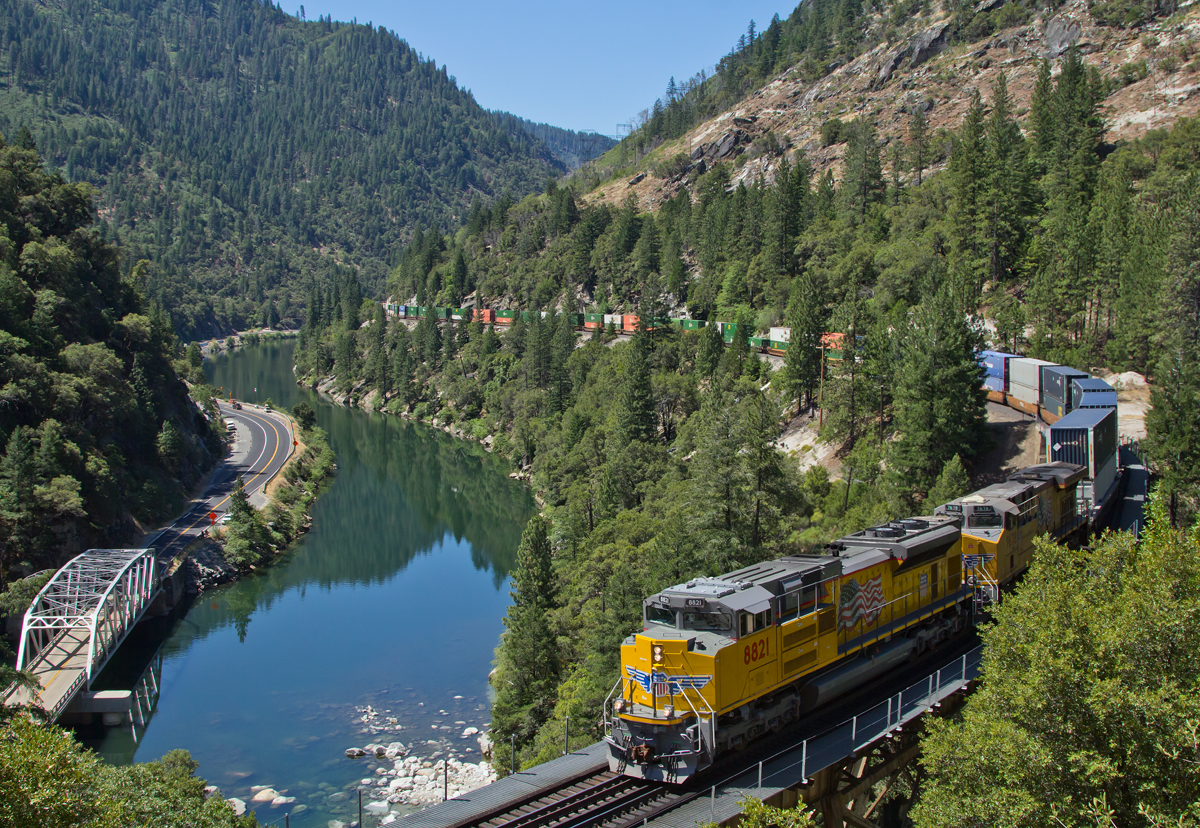
WASHINGTON — BNSF Railway wants to launch international double-stack service this week between Southern California and Salt Lake City via trackage rights over Union Pacific’s former Western Pacific route through the Feather River Canyon.
Not so fast, UP says.
UP says that BNSF has not provided sufficient notice so that UP can hire and train crews to handle the five trains per week between Roseville, Calif., and Salt Lake City. UP also says the BNSF trains must follow its directional running pattern, with eastbounds moving over the former Southern Pacific route over Donner Pass — which would trigger a provision requiring BNSF to pay for half the cost of UP’s 2009 double-stack clearance project.
So BNSF yesterday asked federal regulators for an emergency order directing UP to permit it to begin operating the trains this week for customer CMA CGM via the former Western Pacific, which BNSF dubs the “northern route.”
“BNSF respectfully requests that the Board promptly issue a decision ordering UP to allow BNSF to run double-stack intermodal trains eastbound and westbound over the Northern Route pursuant to BNSF’s trackage rights over these lines and ordering UP to provide the crews for these BNSF trains,” BNSF said in a filing with the Surface Transportation Board.
The trains will use a new intermodal terminal on short line Salt Lake Garfield & Western.
“The SLGW intermodal facility will open for business today,” BNSF said in its July 7 filing. “The first empty train arrived in Salt Lake City last night and the first container arrived today. Once loaded, the first westbound train is expected to leave Salt Lake City this week. BNSF anticipates that the first eastbound movement of BNSF double-stack intermodal trains over the Northern Route will begin as early as later this week.”
BNSF contends that the trackage rights agreement that was part of UP’s 1996 acquisition of Southern Pacific allows it to select which lines it will operate over. “At the time of the UP/SP merger, there was no restriction on BNSF running double-stack intermodal trains bi-directionally on the Northern Route, and there is no such restriction today,” BNSF told the board.
In addition, BNSF notes that it already operates both eastbound and westbound traffic over portions of the former Western Pacific.
“BNSF operates bi-directionally today on a portion of the Northern Route between Roseville, Calif. and Keddie, Calif., so BNSF assumed that it could move its new intermodal service bi-directionally on the remaining segment of the Northern Route between Keddie, Calif. and Weso, Nev.,” BNSF told the board.
BNSF also claims that UP’s attempts to delay the new service are retaliation for losing CMA CGM business.
“By refusing to allow BNSF to run its double-stack intermodal trains eastbound over the Northern Route, UP is blatantly attempting to disrupt the business of BNSF and its intermodal partners and to recoup UP’s lost contribution from that intermodal business by forcing BNSF to pay for one-half of the costs UP unilaterally incurred when it took steps to increase the clearances of the Donner Pass tunnel on the Southern Route for its own business purposes in 2009,” BNSF told the board.
BNSF initially told UP on May 2 that it was planning the new service that would begin in June, without specifying a route.
CMA CGM, in a letter to the STB, urged regulators to act quickly to allow the service to begin.
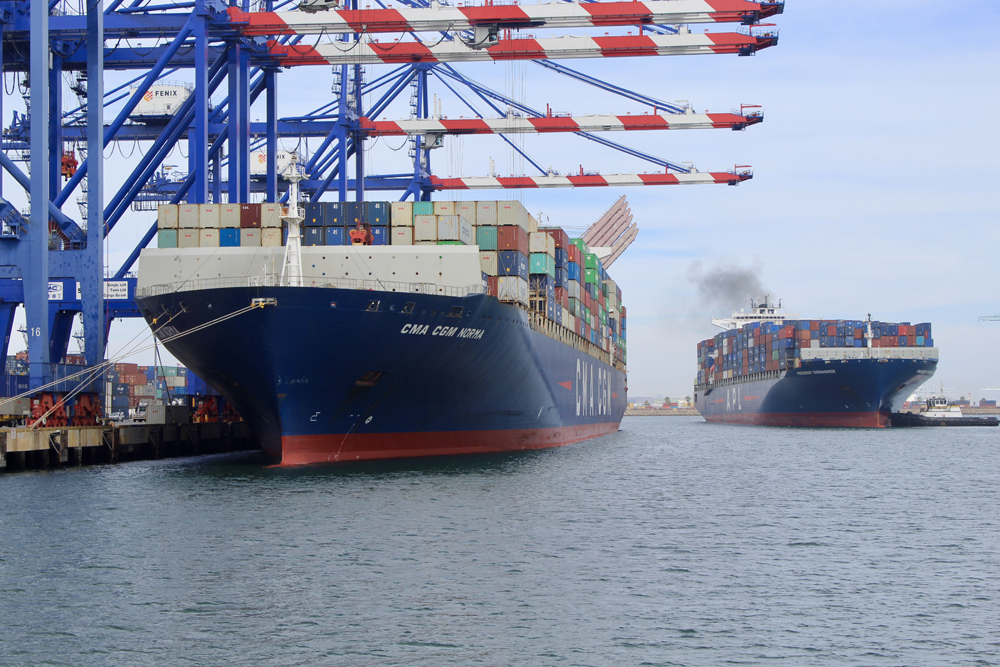
“This development is deeply concerning. Without immediate resolution, our supply chain will be disrupted, impacting our customers across the region, including potentially a loss of business,” Bob Basila, the shipping company’s senior vice president and chief procurement officer, told the board. “We have made substantial operational and commercial commitments based on the availability of this service, and the current impasse threatens to undermine those investments.”
Union Pacific counters that BNSF failed to follow proper procedures. “If BNSF cannot fulfill its promises to begin running new intermodal service this week, it has only itself to blame,” the railroad told the STB.
“The Board should deny BNSF’s request for emergency action. Had BNSF simply followed contractual procedures, there would be no issue. Union Pacific is fully willing to allow BNSF to institute new intermodal service once it hires and trains the required crews and works through any operating issue with SLGW,” UP said.
UP says the 1996 trackage rights agreement with BNSF gives it the right to operate directionally, while also requiring BNSF to pay its share of clearance improvements on the SP Donner Pass route.
“Resolving this particular dispute is about payment of money — it is not an ‘emergency’ that requires a departure from the Board’s normal process for resolving disputes,” UP said. “Union Pacific believes the dispute over BNSF’s obligation to pay its share of the costs of clearances on the Southern Route should be arbitrated.”
Carl Garrison, UP’s vice president of network planning and operations, told the board that BNSF didn’t provide detailed written notice of the planned new service and its proposed route until June 20, and that the few operational details BNSF provided suggest that the interchange with the SLGW will interfere with existing operations.
“Union Pacific is apparently expected to shove the train into SLGW’s yard, which means that Union Pacific must stop and reverse the train on its main line, and the plan says SLGW will switch the train in three cuts, which suggests that the train might occupy Union Pacific’s main line while SLGW is switching the train,” Garrison told the board.
Running eastbounds against the flow of traffic on the former WP, he added, would disrupt service for customers on BNSF’s trains as well as those who rely on existing westbound trains.
Note: Updated at 11:54 a.m. Central to add detail regarding the timing and extent of BNSF notifications to UP.







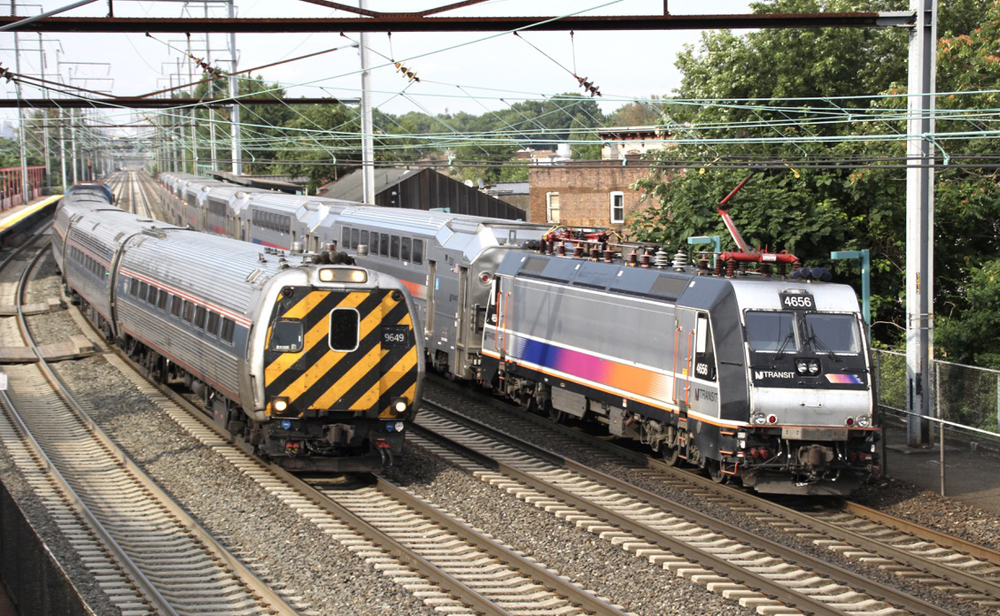
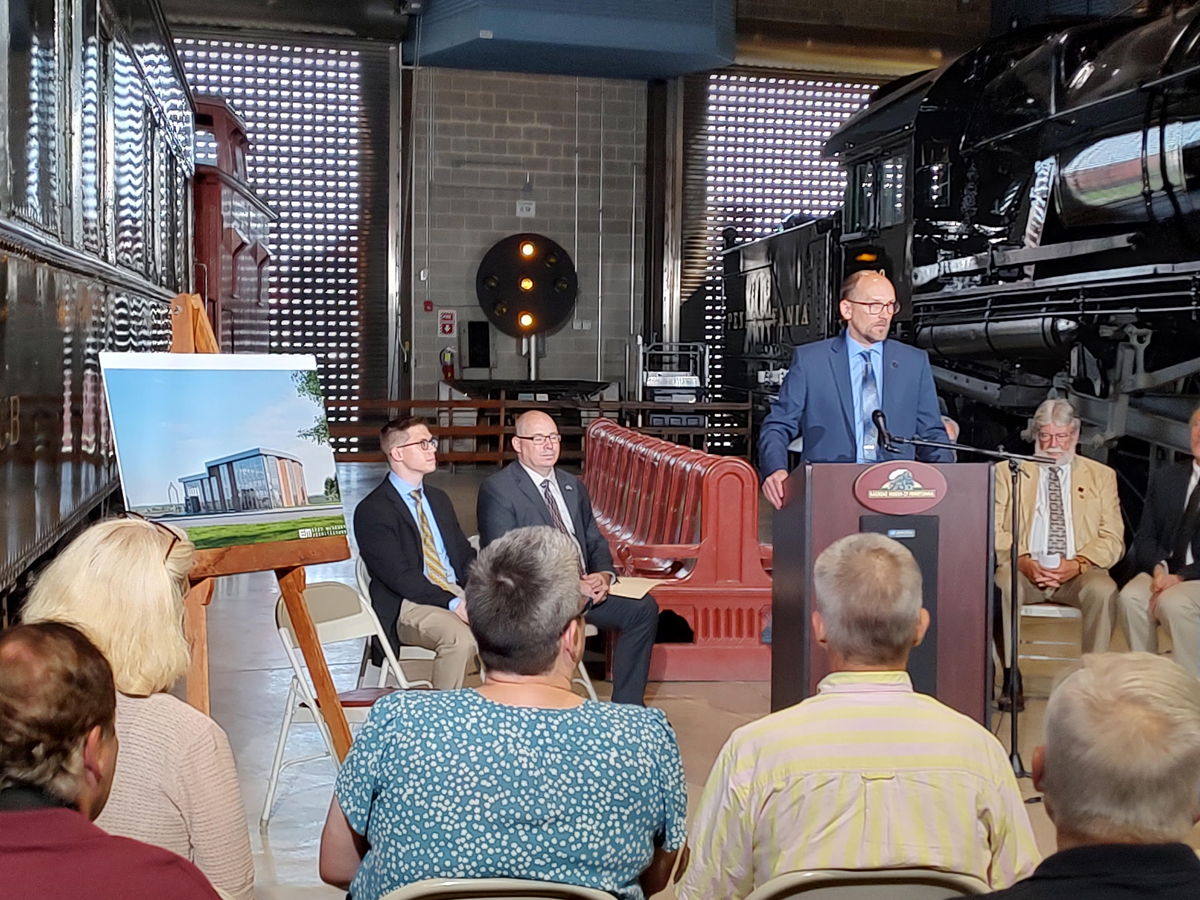
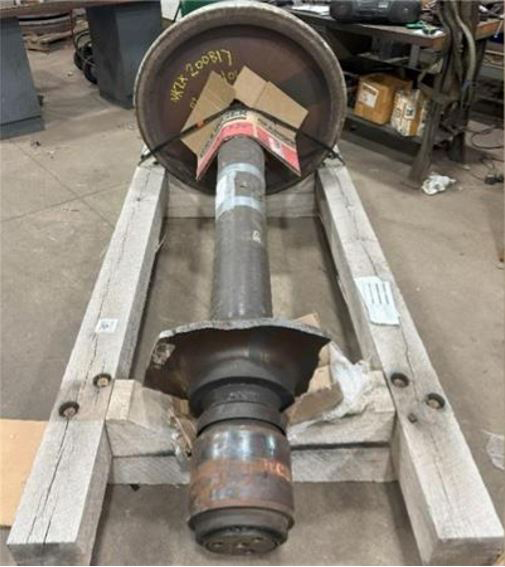
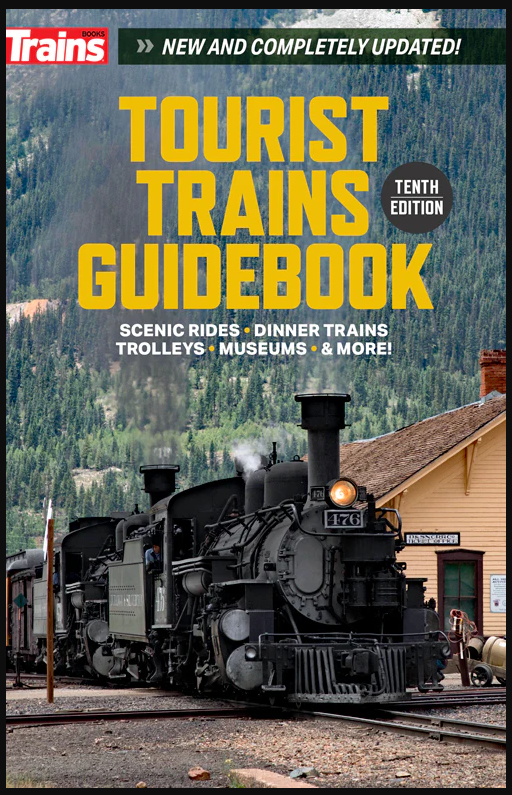
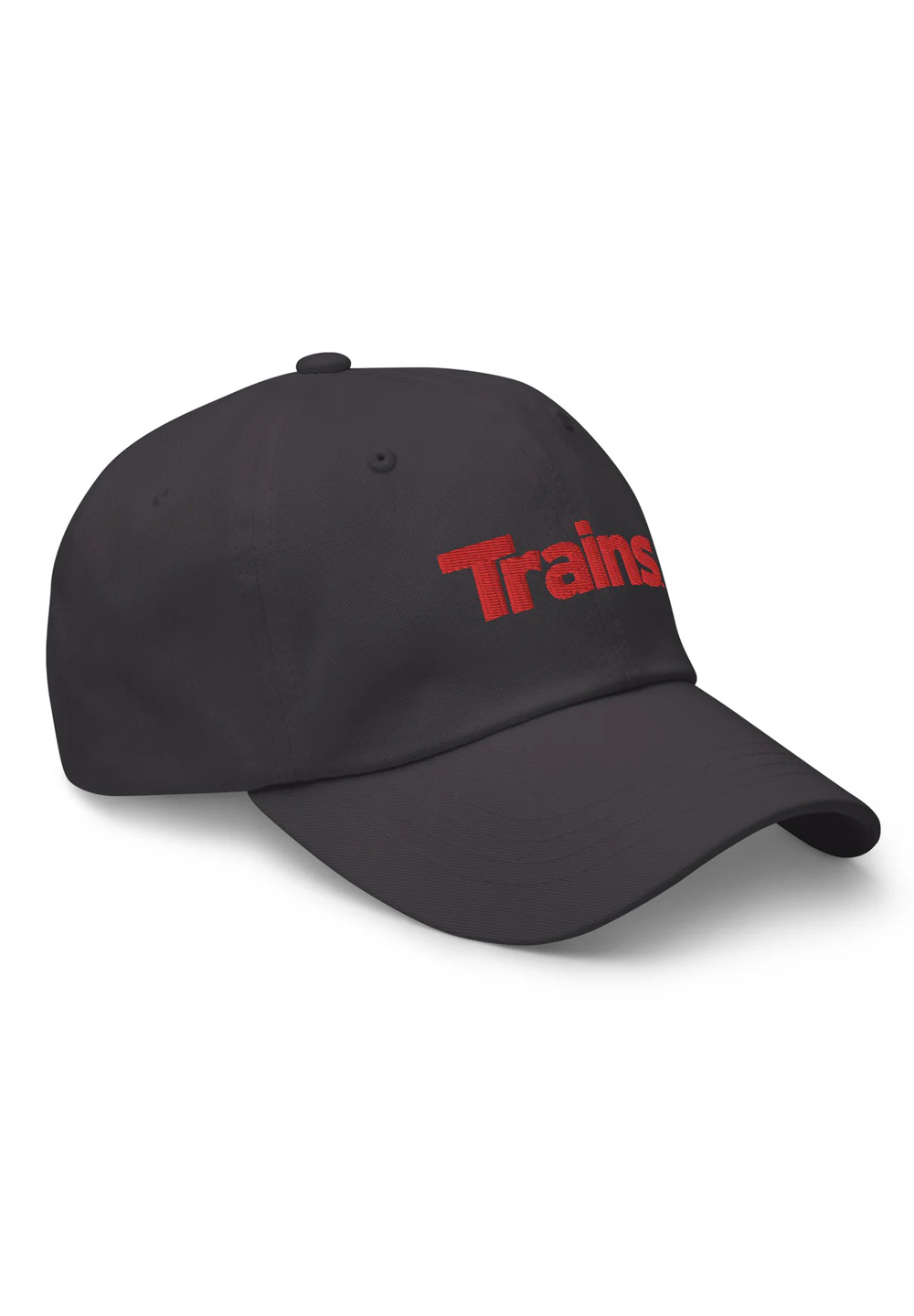
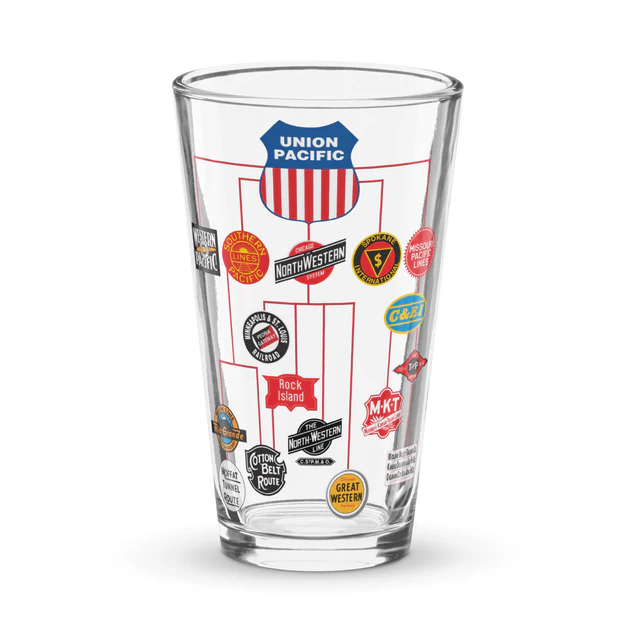
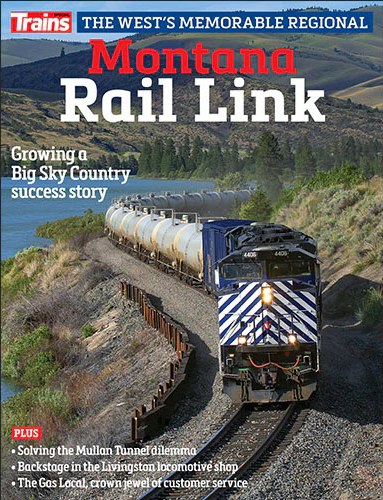
STB should have required UP to divest the WP route (as well as the D & RGW) when it was allowed to merge with SP. Wouldn’t have as many problems as they do now. Too bad.
D&RGW and Southern Pacific were the same railroad in 1996 when UP merged the “SP”. Phillip Anschutz owned the Rio Grande and merged it with the SP but kept the SP name as the operating name. SO, when UP merged the SP, they actually were merging the Rio Grande and its subsidiary, the Southern Pacific. Why he took such a circuitous route is anybody’s guess but that is how D&RGW became part of the UP. Divestiture of the Rio Grande was not an option. It and the SP were both “sick” railroads.
Plus I thot the SLGW was gone and torn up¡
It barely exists, mostly as a single track that goes as far as the International Center in West Salt Lake City (Used to go to Salt Air Resort back in the day) and as a few side tracks near the State Fair Park.
Warren can just have a few guys open up one vault and shovel out some gold to pay Uncle Pete. Costs too much to rebuild the St. Paul’s Pacific Extension. Rebuilding the NoPac might be cheaper.
Why would UP have to hire crews? On all trackage right arrangements that I am familiar with the guest railroad provides crews for their own trains.
Mark Vinski
Note that as a big global player, the French CMA CGM is the third largest container shipping company in the world.
Dr. Güntürk Üstün
Now imagine we have two transcon mergers and the merger conditions include several instances of trackage rights to protect competition. Only have to deal with a few STB cases now and then and the industry will be very competitive!
Are you joking Clayton or do you want us to believe you mean it?
BNSF’s short time notice does seem disingenuous. Probably it did not want UP to know of its intentions of a new service. What is needed is for BNSF to temporary assign mountain qualified crews to operate its trains once they get route qualified. To make it hurt BNSF will have to pay the UP crews until UP can get its own crews fully qualified.
Now the SLGW situation is more turbid. UP having to split the IM and back each section into SLGW is a definite imposition. STB needs to require BNSF to make whatever track improvements within a certain time to eliminate that problem.
“Union Pacific is apparently expected to shove the train into SLGW’s yard, which means that Union Pacific must stop and reverse the train on its main line, and the plan says SLGW will switch the train in three cuts, which suggests that the train might occupy Union Pacific’s main line while SLGW is switching the train,”
Three cuts? There’s THAT MUCH business to and from Salt Lake City?
No, but the SLGW’s “yard” is that small.
Okay, history lesson everybody. February 1973. The ICC finally publishes it’s decision in the Rock Island merger case. It had taken ten years for the ICC to consider all of the evidence and objections, and the merger was approved with literally volumes full of conditions. One set of conditions gave the Santa Fe permission to merge with the Western Pacific, the Rio Grande, and the Missouri Pacific.
So, for BNSF the solution is simple – Come back fifty years ago and buy all those lines before the UP does. Since that’s not going to happen, BNSF is stuck with what they’re stuck with.
Uncle Pete, specifically Edd Bailey, understood you either grow or die. Even though he was gone by the time UP absorbed the WP & MP he set Omaha in that direction. Big John Reed wanted only to make the ATSF the best it could be…and missed out on the MoPac. Big Ben seemed to forget the Espee went beyond the Rockies and missed out on…well, everything. Those who dared are still here.
*cough*divest*cough*
Once again BNSF is just trying to provide good service and the other railroad is doing all it can to stop it.
No, BNSF is trying to impose its will in a market in which it mostly replies in shortlines (SLGW and Utah Railway) to do its bidding. It has no direct access to Salt Lake and onlt gets there by trackage rights. As far UP on the Feather River Route, IT IS THE OWNER. It has determined that directional running is how it wants to run IT’S RAILROAD in that region. For BNSF to try and impose its will on the UP is Arrogant to the MAX. As a tenant, BNSF should be grateful they don’t have to take the long way around and do as the owner asks and run their “guest” trains accordingly. BNSF has tried to tell UP how to run Tehachapi and now they want to tell UP how to run the I-5/Feather River corridor, Maybe the STB should give UP the authority to tell BNSF where to go…
Add just one more reason that this massive sharing of track using “rights” that in some cases are obsolete due to changes by the owning host are a zero sum game.
If you want route flexibility and have it under your control, then own your own ROW instead of crying to the STB constantly about not getting your way.
The problem is that it has become cheaper to simply share tracks and use lawyers to argue in a single jurisdiction (STB) than it is to own and maintain ones own destiny.
Now, now children. Let’s play nice.
The BNSF can compete by running trains around two sides of a triangle? And the UP doesn’t have the capacity to run an extra 5 trains a week?
Right Robert. I am still trying to figure out the statement that says they need time to hire and train crews to run the service. Are they running the boards and pools that tight that it can’t even handle an additional 1 train a day, if that?
No, the route is just that congested. BNSF could always run through Nevada and then take the Modoc line northwest (inland Empire)to Keddie… but that of course is not how BNSF sold the route in the first place. So “BNSF assumed” (as the article clearly said…can’t believe a lawyer would be that dumb to include that word in any request!) they could just go ahead an do what they wanted. And we all know what “assumed” reefer’s to: Someone will make an “ass of you (CMA-CGM) and me”(BNSF). Warren is going to have to sig Rat Face…er… Greg Able on BNSF and ask them why they are trying to be such a wienie in the US railway industry. Having worked in a Buffet owned company once, that usually means a lack of planning by someone… not good.